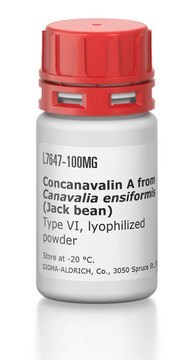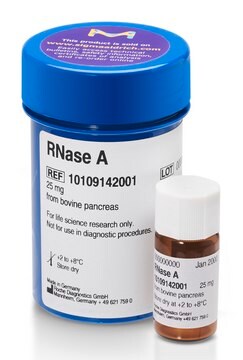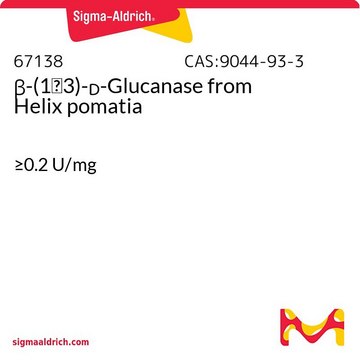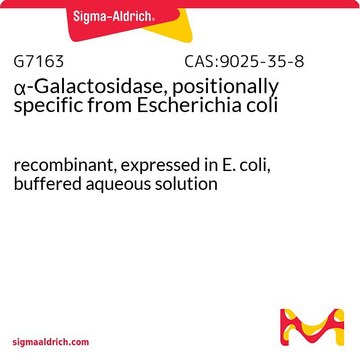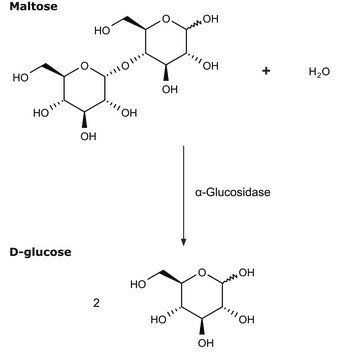G4511
β-Glucosidase from almonds
lyophilized powder, 10-50 units/mg solid
Synonyme(s) :
β-D-Glucoside glucohydrolase
Sélectionner une taille de conditionnement
Sélectionner une taille de conditionnement
About This Item
Produits recommandés
Forme
lyophilized powder
Niveau de qualité
Activité spécifique
10-50 units/mg solid
Poids mol.
50-75 kDa
Caractéristiques du produit alternatif plus écologique
Waste Prevention
Design for Energy Efficiency
Learn more about the Principles of Green Chemistry.
sustainability
Greener Alternative Product
Impuretés
salt, essentially free
Autre catégorie plus écologique
, Enabling
Température de stockage
2-8°C
Vous recherchez des produits similaires ? Visite Guide de comparaison des produits
Description générale
Application
- in enzyme inhibition studies by 1,5-dideoxy-1,5-imino-d-xylitol(DIX) derivates
- as a control in for comparison of soybean isofavone glycosides degradation by β-Glucosidase from Talaromyce leycettanus
- as a medium component during saccharification and fermentation of yeast
Actions biochimiques/physiologiques
Définition de l'unité
Notes préparatoires
Inhibiteur
Substrat
Mention d'avertissement
Danger
Mentions de danger
Conseils de prudence
Classification des risques
Resp. Sens. 1
Code de la classe de stockage
11 - Combustible Solids
Classe de danger pour l'eau (WGK)
WGK 1
Point d'éclair (°F)
Not applicable
Point d'éclair (°C)
Not applicable
Équipement de protection individuelle
dust mask type N95 (US), Eyeshields, Faceshields, Gloves
Faites votre choix parmi les versions les plus récentes :
Déjà en possession de ce produit ?
Retrouvez la documentation relative aux produits que vous avez récemment achetés dans la Bibliothèque de documents.
Les clients ont également consulté
Articles
Today, diverse studies report the benefits of probiotics, such as inhibitory effects on pathogens, aid in the management or prevention of chronic intestinal inflammatory diseases or atopic syndromes, and support to the immune system. Potential beneficial applications abound, researchers continue to evaluate the effictiveness and clarify the mechanisms of action of probiotics.
Notre équipe de scientifiques dispose d'une expérience dans tous les secteurs de la recherche, notamment en sciences de la vie, science des matériaux, synthèse chimique, chromatographie, analyse et dans de nombreux autres domaines..
Contacter notre Service technique



